Tomatoes are one of the most widely used ingredients in kitchens across the world.
Whether you’re slicing them for a salad, blending them into a sauce, or canning them for future use, ensuring that your tomatoes are clean is essential for both health and flavor.
Despite their smooth appearance, tomatoes can harbor dirt, bacteria, pesticides, and other residues that can impact their safety and taste.
In this guide, we’ll walk through everything you need to know about how to clean tomatoes properly, step-by-step, with tips for different scenarios including raw consumption, cooking, and preservation.
Why Cleaning Tomatoes Is Necessary
Table of Contents
Before diving into the “how,” it’s important to understand the “why.” Tomatoes are often grown with the help of fertilizers, pesticides, and herbicides, some of which can remain on the skin even after harvest.
Additionally, during transport and storage, they come in contact with numerous surfaces and handlers, increasing the chance of contamination. Cleaning tomatoes:
- Removes dirt and grit that may not be visible.
- Washes away chemical residues.
- Reduces the risk of foodborne illnesses from bacteria like Salmonella or E. coli.
- Enhances the taste and texture for culinary use.
When Should You Clean Tomatoes?
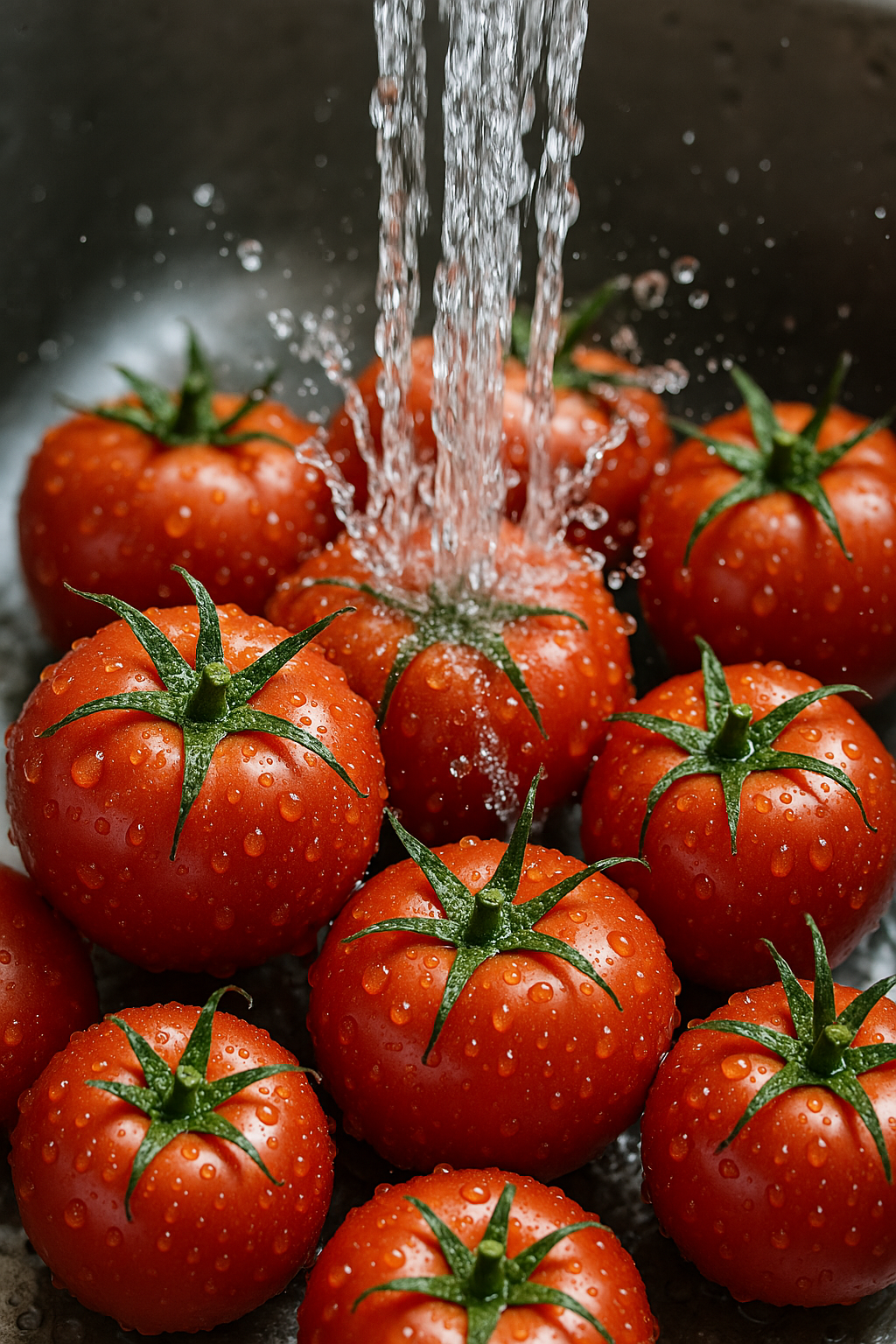
Many people wash produce as soon as they bring it home, but that’s not always the best idea. Washing tomatoes before storage can actually encourage mold and premature spoilage due to excess moisture. Ideally, clean your tomatoes just before use — unless you’re processing them for canning or freezing.
Step-by-Step Guide to Cleaning Tomatoes
Here is a step by step process to clean tomatoes:
Choose the Right Tomatoes

Before cleaning, inspect your tomatoes for signs of bruising, mold, or rot. Discard any that are significantly damaged or leaking fluids, as they may already be contaminated internally.
If you’re using organic tomatoes, you may reduce your exposure to pesticides, but they still need to be cleaned to remove soil and other contaminants.
Rinse Under Cold Running Water
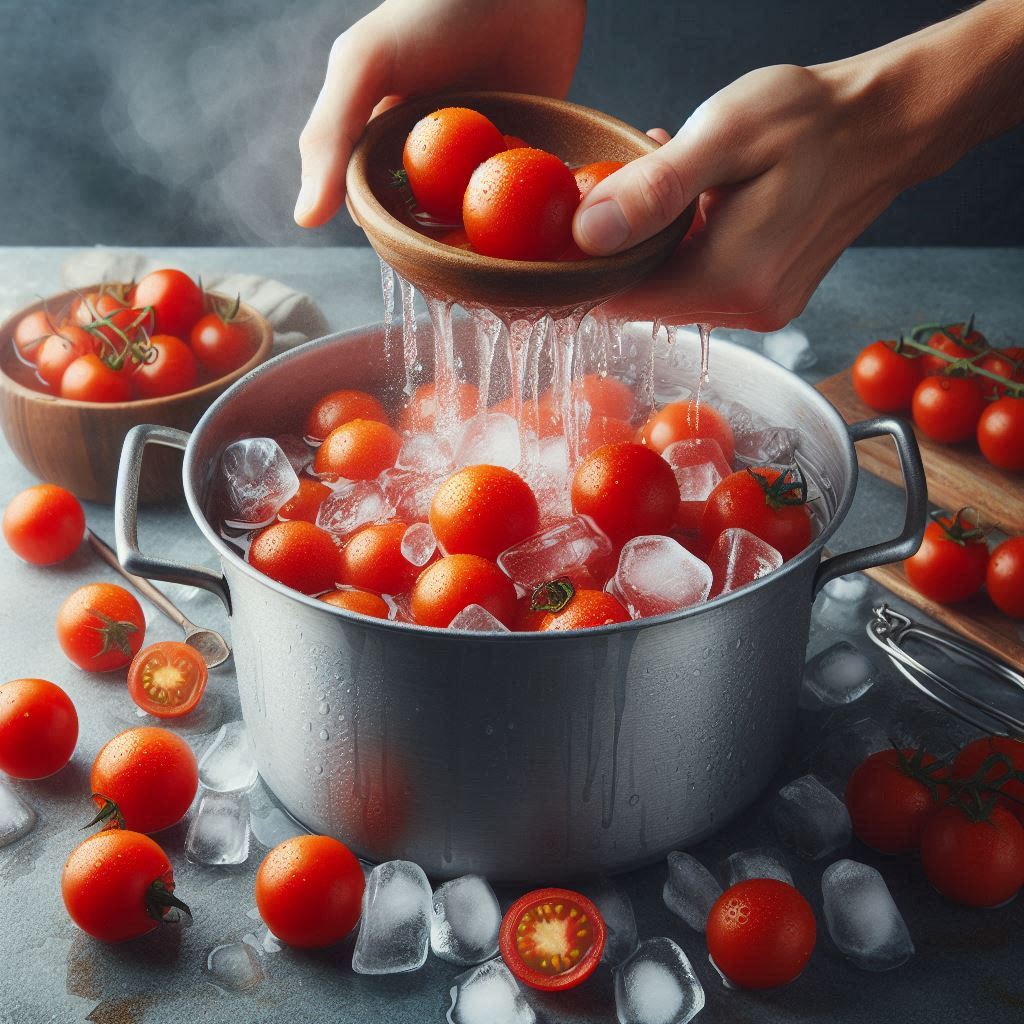
Place the tomatoes in a colander or hold them individually under cold running water to wash them thoroughly. Use your hands to gently rub the skin, helping to loosen any dirt or surface debris. Avoid using hot water, as it may alter the tomato’s texture or encourage nutrient loss.
Do not soak tomatoes in a sink full of water. Standing water can be a breeding ground for bacteria, and the tomatoes may absorb some of the water through the stem scar.
Use a Vegetable Brush or Cloth (Optional)
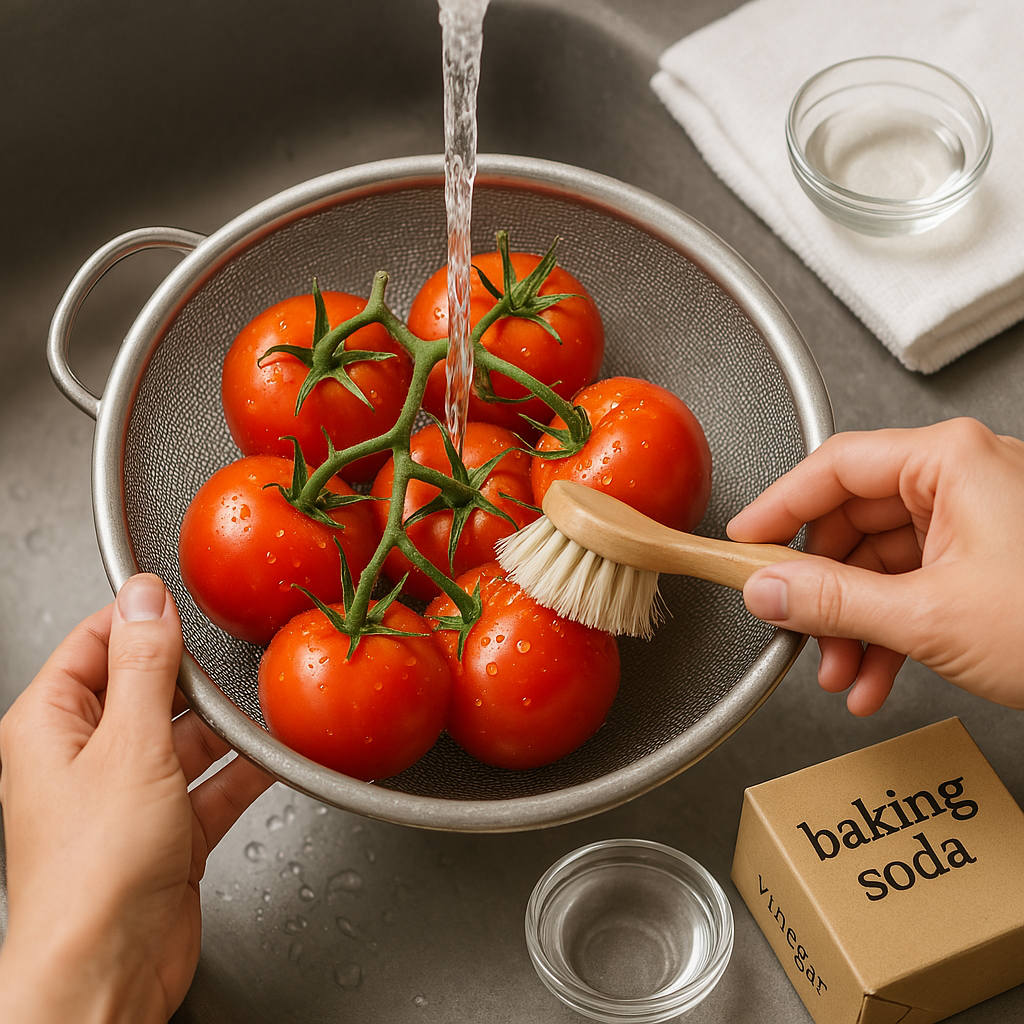
While tomatoes are delicate compared to root vegetables, a soft produce brush or clean cloth can help remove stubborn dirt. Gently rub the skin without applying too much pressure, which might bruise or damage the tomato.
Only use brushes labeled food-safe and keep them clean to prevent cross-contamination.
Pay Special Attention to the Stem Area
The stem scar is a small indentation where the tomato was connected to the vine. This area often collects dirt and can be an entry point for bacteria. Gently rub this area with your fingers or a soft brush, and ensure water flows through it to dislodge any debris.
Remove Pesticides with Natural Cleansers (Optional)
If you’re concerned about pesticide residues, you can use natural solutions known to reduce or remove them:
Baking Soda Soak
- Fill a large bowl with water.
- Add 1–2 tablespoons of baking soda per liter of water.
- Let the tomatoes soak for 10–15 minutes.
- Rinse thoroughly under running water afterward.
- Baking soda can effectively remove certain pesticides better than water alone.
Vinegar Soak
- Mix one part white vinegar with three parts water.
- Soak tomatoes for 5–10 minutes.
- Rinse thoroughly to remove vinegar taste.
- This method also has antimicrobial benefits, although it may slightly affect the taste if not rinsed well.
Dry the Tomatoes
After rinsing, pat the tomatoes dry with a clean kitchen towel or paper towels.
Removing surface moisture helps reduce the risk of mold and makes the tomatoes easier to slice or cook with. For bulk cleaning (like for canning), let them air dry in a single layer on a clean towel. If you want t sun dry the tomatoes, then follow this link.
Special Cleaning Instructions by Use Case
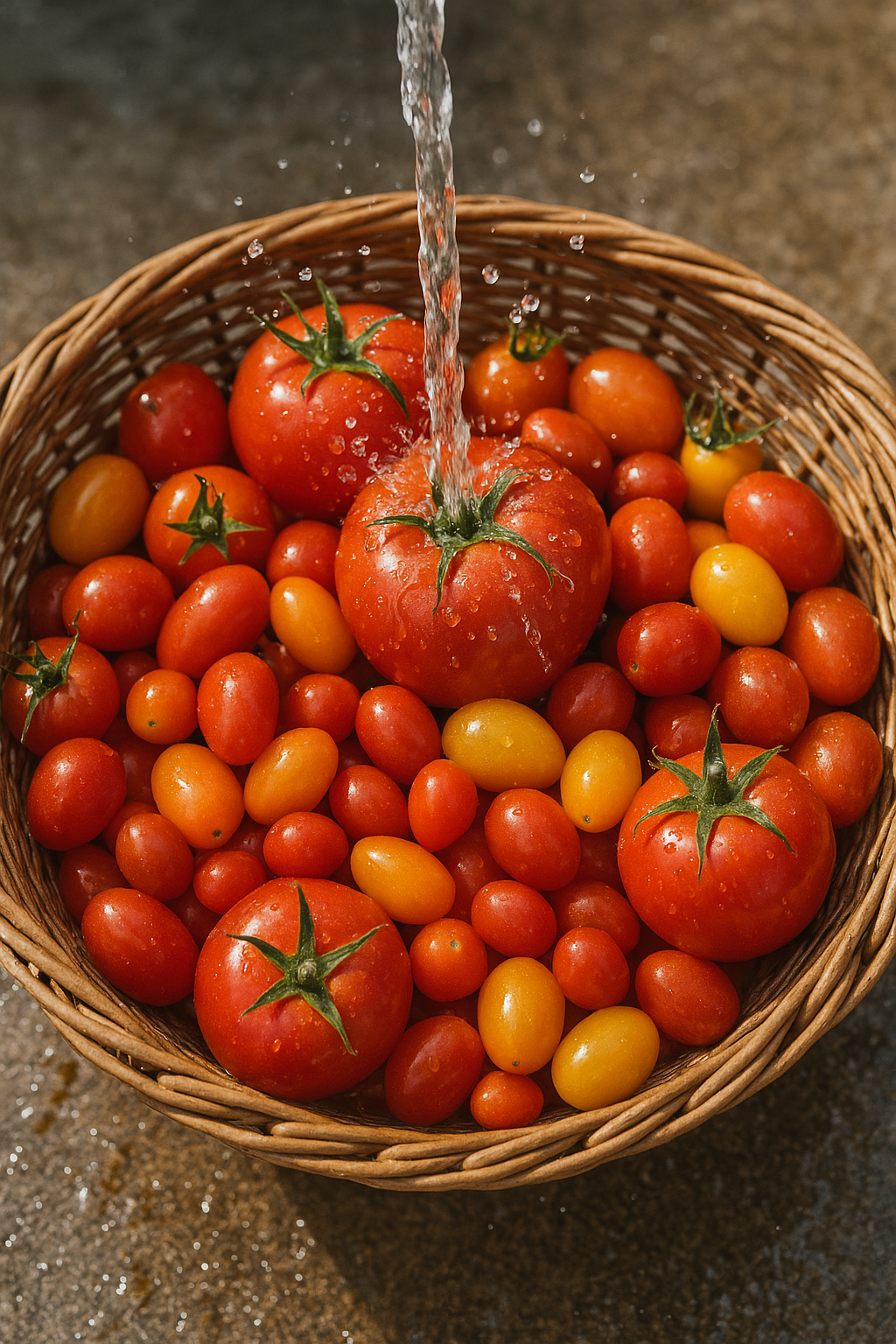
A. For Raw Consumption (Salads, Slicing)
You’ll want your tomatoes to be extra clean when they’ll be consumed raw:
- Use filtered water if your tap water is questionable.
- Opt for a vinegar or baking soda soak to reduce both pathogens and pesticide residues.
- Dry thoroughly and store in a clean bowl or on a paper towel-lined plate until ready to eat.
B. For Cooking (Sauces, Soups, Roasts)
When cooking tomatoes, you’re less concerned about surface bacteria, as high heat will kill most pathogens. A basic rinse and rub will usually suffice. However, if you plan to use the skin in the dish, consider a baking soda rinse for chemical residues.
If you’re blanching tomatoes to remove skins, there’s no need for elaborate cleaning beforehand—just rinse and go.
C. For Canning or Preserving
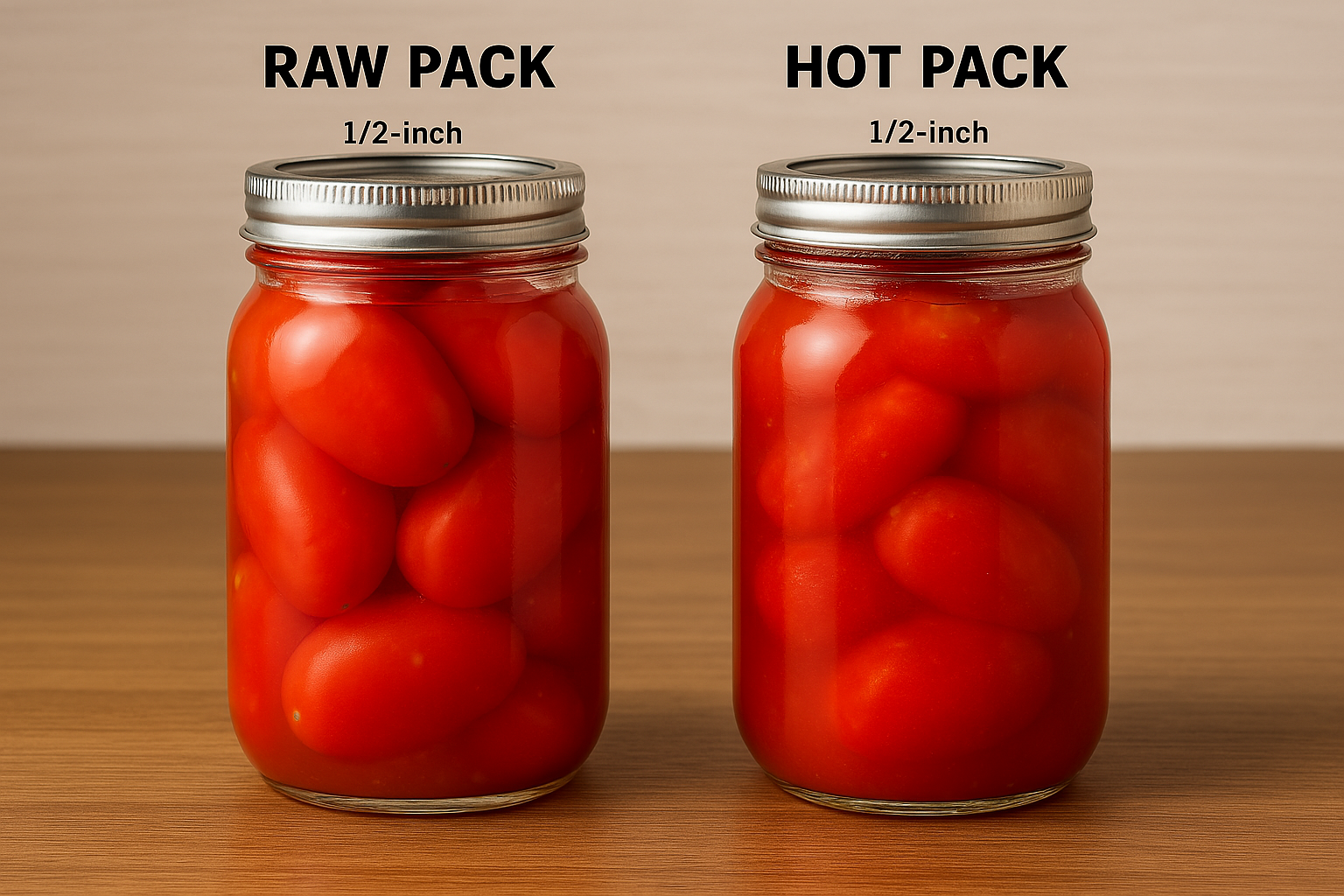
Cleanliness is critical for canning because bacteria trapped inside sealed jars can multiply and cause spoilage—or worse, foodborne illness like botulism.
- Wash tomatoes thoroughly using baking soda or vinegar solution.
- Inspect for blemishes or cracks.
- Blanch and peel if the recipe requires it.
- Sterilize all tools, jars, and lids.
D. For Freezing
Frozen tomatoes are usually used in cooked dishes, but cleanliness still matters:
- Rinse and clean thoroughly.
- Dry completely to prevent freezer burn.
- Core and quarter, or freeze whole depending on intended use.
- Store in airtight freezer bags with date labels.
Common Mistakes to Avoid When Cleaning Tomatoes
- As mentioned, washing tomatoes before storing them leads to mold and spoilage.
- Never use dish soap or bleach. These substances can leave residues that are harmful if ingested.
- This is one of the dirtiest parts; make sure it’s cleaned.
- Tomatoes bruise easily. Be gentle during cleaning to preserve firmness and quality.
What About Store-Bought Pre-Washed Tomatoes?
Even tomatoes labeled as “pre-washed” or “ready to eat” should be cleaned again. Contamination can occur post-packaging, and rinsing them again ensures maximum safety.
Storing Tomatoes After Cleaning
If you’ve cleaned more tomatoes than you’ll use immediately, dry them thoroughly and store them in a breathable container:
- Room temperature for uncut, whole tomatoes you plan to use within 1–2 days.
- Refrigerator for sliced or overly ripe tomatoes. Wrap in paper towels and place in a sealed container.
- Freezer for long-term storage, ideally after blanching and peeling.
Wrapping Up
Cleaning tomatoes may seem like a simple task, but doing it properly ensures you’re getting the best taste and nutrition while reducing risks associated with contaminants.
Whether you’re preparing a fresh Caprese salad or canning batches for winter, clean tomatoes are the cornerstone of safe, delicious meals. Always rinse under cold water, consider natural soaks for added safety, and dry thoroughly. With these best practices in mind, you can enjoy tomatoes in all their juicy, vibrant glory — safely and confidently.
Would you like this formatted as a PDF or prepared for printing? I can also provide a summarized checklist version if you’d prefer something more concise.
Leave a Reply